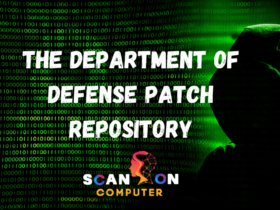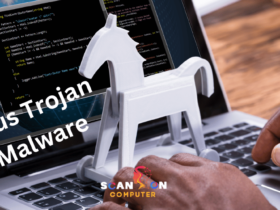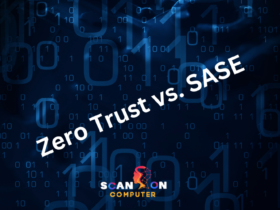Vulnerability management tools proactively scan software running on your business assets for vulnerabilities and offer recommendations for correcting flaws to thwart future attacks.
OpenVAS (short for “Open Vulnerability Assessment System”) is a free vulnerability scanner which utilizes Greenbone’s database. Furthermore, this platform features an active community message board.
What Are Vulnerability Management Tools?
Vulnerability management tools are security applications designed to scan networks for vulnerabilities that hackers could exploit, and recommend or initiate remedial action to lessen the possibility of breaches.
Most vulnerability management tools offer several key features to assist enterprises in staying abreast of cybersecurity threats, including scanning for vulnerabilities and misconfigurations, identifying risk ratings and prioritizing them, automatically updating software patches, and providing remediation recommendations that minimize system downtime.
ManageEngine Vulnerability Manager Plus is a robust platform designed to manage both internal and external scanners across an entire network, with user-friendly functionality that easily integrates with SIEM, ticketing systems, CMDB databases, notifications systems, CI/CD systems as well as being deployable as SaaS or an on-demand service.
ESET Protect MDR is a managed security service offering customizable software plans for endpoint protection, email security and vulnerability scanning with options for patch management and threat detection. Available as either cloud platform installation or for physical servers running Windows, MacOS and Linux OS.
Features of Vulnerability Management Tools
An effective vulnerability management tool offers many features that make it worth its investment, including automated product suites that save IT and security staff time while protecting an organization from attacks. Furthermore, such tools can identify vulnerabilities within an organization’s perimeter as well as plug holes that allow lateral movement within it – helping protect sensitive data while stopping attacks before they begin.
Qualys VMDR 2.0 with TruRisk is an enterprise-grade vulnerability management solution that equips organizations to thwart common attack vectors like phishing, malware, ransomware, fileless attacks and supply chain attacks. The platform detects vulnerabilities across endpoints, virtualized systems and cloud infrastructure as well as on-premises and custom software solutions and prioritizes risks with step-by-step remediation instructions to assist IT and DevOps teams improve security posture.
Tripwire IP360 provides complete on-premises and cloud protection with its priority risk scoring mechanism and scalability features. Using custom-built sensors, Tripwire IP360 collects vulnerability data from machines, virtual machines (VMs), containers and repositories such as Kubernetes. In addition, its support for continuous integration/continuous delivery workflows with code scanning during development, acceptance testing and operations makes Tripwire IP360 the ultimate protection solution.
Top 5 Vulnerability Management Tools
Utilizing a vulnerability management tool is an excellent way to protect against hackers exploiting any weaknesses in your systems, as they scan them for weaknesses hackers are aware of, suggesting or automatically initiating fixes to these vulnerabilities.
Nexpose is a vulnerability scanner available as software, virtual appliance, hardware appliance, private cloud or managed service. Known for its easy setup and configuration process, intuitive web user interface and speed. Offering various scanning templates as well as the capability of searching for numerous vulnerabilities across any number of industries and environments.
Nessus Professional is one of the most widely deployed vulnerability assessment tools across enterprises. It provides high-speed asset discovery, target profiling and configuration auditing; malware detection as well as scanning capabilities.
Qualys VMDR 2.0 with TruRisk provides comprehensive vulnerability management, penetration testing and threat analysis in one centralized solution. Using an IoT vulnerability scan it identifies your entire attack surface including on-premise assets, IoT devices, cloud infrastructure, operational technology (OT) systems and containers – prioritizing and remediating vulnerabilities while ITSM tools make prioritizing fixes easy.
1. Nmap
Nmap is an invaluable port scanning tool used by both white hat hackers and black hat hackers alike, enabling users to identify devices connected to networks as well as services running on them. As such, Nmap makes an invaluable asset for security administrators to assess the state of their networks.
This free software also enables users to perform ping scans, stealth scans, dynamic delay and retransmission calculations, parallel scanning, MAC address identification, decoy scanning, direct RPC port scanning, as well as powerful scripting engine that allows automating system and vulnerability scans. It supports various operating systems and includes features such as graphical mappings, command line interface customization options, extensible libraries for Lua programming as well as support for multiple other languages such as PHP/MySQL etc.
Although Nmap can help identify vulnerabilities on web servers, its misuse could leave your business open to attack. Deploying Nmap in your organization may help mitigate the impact of newly discovered vulnerabilities.
2. ThreatMapper
A vulnerability management tool can assist in protecting against hacker attacks by scanning for vulnerabilities that hackers might exploit. Many of these vulnerabilities are already known by software producers and can be addressed with patches; others require tightening system settings or setting changes.
ThreatMapper SaaS platform scans both internal and external assets for vulnerabilities, providing PCI DSS compliance reporting as well as user-friendly interface. Suitable for SMBs with limited cybersecurity expertise. Visit their website to experience their tool for yourself for a free demo session.
ThreatMapper software detects vulnerabilities on Windows, Linux, MacOS and Azure systems using lightweight agents. It identifies and prioritizes risks with an actionable risk score to help IT identify the most significant threats in your infrastructure. Furthermore, this cloud-based solution connects with SIEM, ticketing and CMDB systems to automate remediation tasks and provide board-ready reports; its cloud architecture makes it suitable for use with remote workforces while monitoring phishing/social engineering attacks can also be monitored.
3. OSPd
OSPd is an open source software solution that enables users to monitor the status of card readers and control panels remotely, as well as to receive notifications if any are compromised, their firmware needs updating, configured devices need monitoring or their activity needs monitoring – serving as an ideal alternative to Wiegand interfaces.
OSPd adheres to Government Code 11015.5 in not selling or sharing “electronically collected personal information” about its website users with third parties without their express permission. OSPd may use such data for notifications about updates or information relevant to them; however, users have the right to request that all electronically collected information be deleted without reuse.
4. Watchdog
With thousands of vulnerabilities affecting sprawling IT infrastructures, even organizations with sufficient manpower need time and dedication to identify them all. That is why vulnerability management tools and services are indispensable for preventing breaches, remediating weaknesses, and increasing security awareness.
Watchdog tool helps identify your most significant security gaps through multiple technologies, including network, port, and IP scanners, IPS/IDS, MAC address filtering and host mapping. Additionally, this can detect unexpected access points, unpatched software installations or any other factors which leave your organization open to external attacks.
This tool offers an expansive set of scanning and detection capabilities typically reserved for commercial offerings, yet is easy to set up and use on-premise or through managed services. Furthermore, its scan execution times can be tailored to accommodate different time zones; an invaluable feature for multinational organizations. In addition, its central dashboard provides IT asset management functions and patch management functions.
5. Wireshark
Wireshark (formerly Ethereal) is an open-source packet sniffer designed to enable IT professionals to analyze and troubleshoot network traffic at a granular level, while simultaneously helping to detect vulnerabilities within their organization’s IT infrastructure and mitigate threats to it. Like other packet sniffers, this tool features support for thousands of protocols and offers an easily customizable user interface, allowing IT professionals to hone in on specific interests quickly. Furthermore, users can generate statistics and visualize network streams. However, users should note that such tools can also be misused maliciously: for instance when operated in promiscuous mode they can analyze all network traffic without explicit approval from network administrators.
Penetration testers typically employ Wireshark for reconnaissance and to identify vulnerabilities within an IT infrastructure. Furthermore, it allows them to examine network packets for passwords that they can attempt to crack using password cracking tools like Weakshark. While its interface may intimidate newcomers at first, Wireshark remains one of the most trusted packet analyzers available today.












Leave a Reply
View Comments